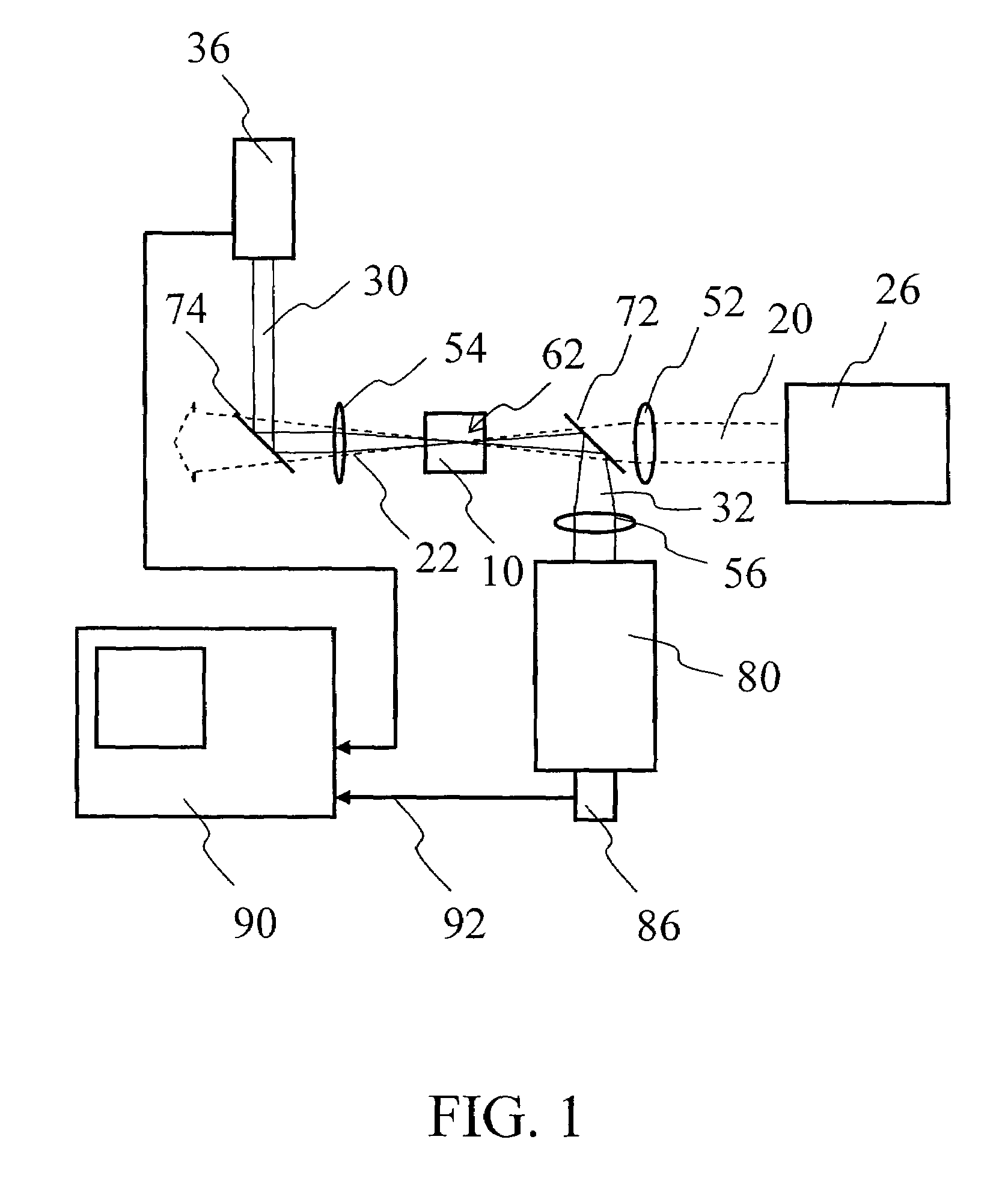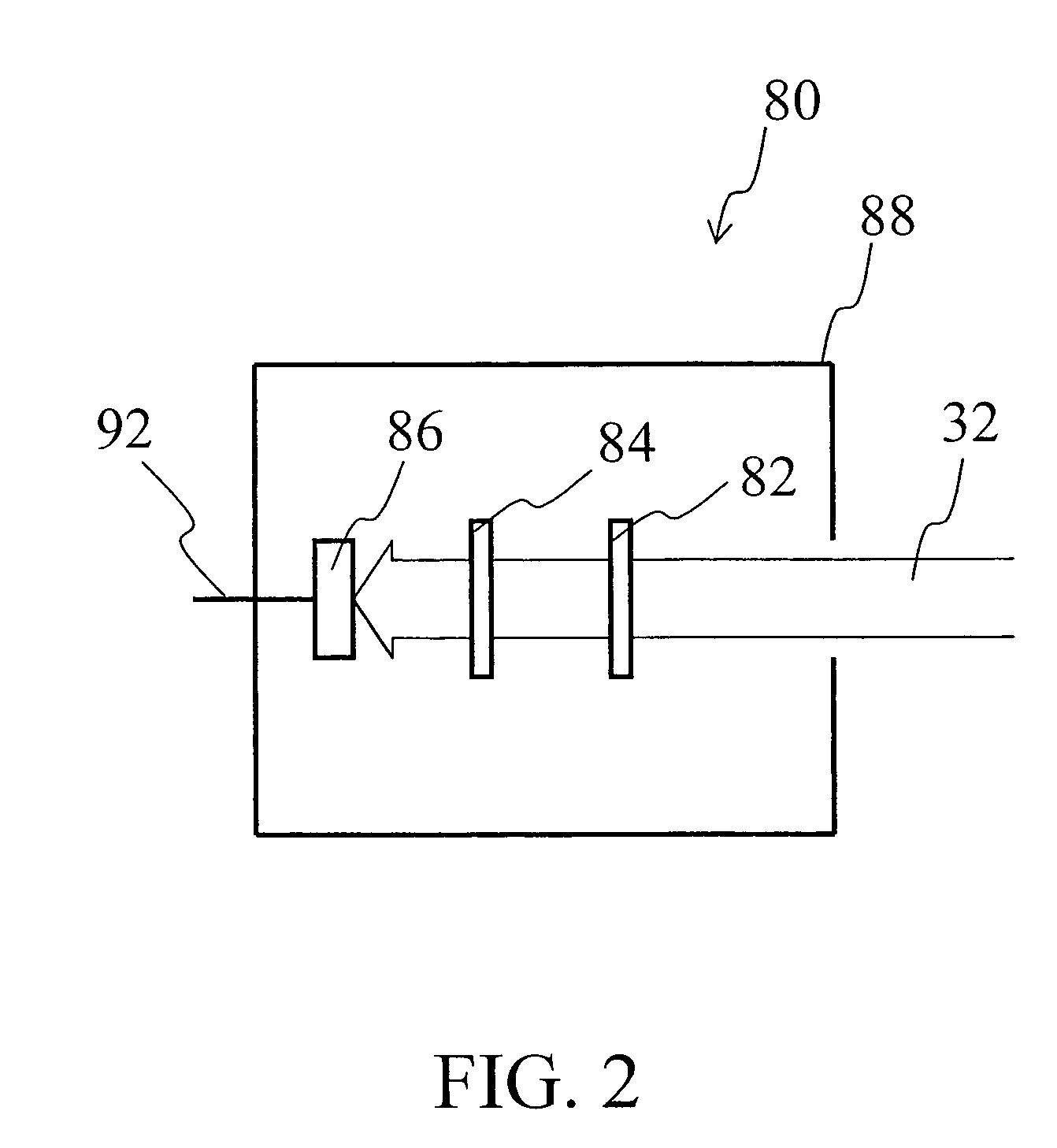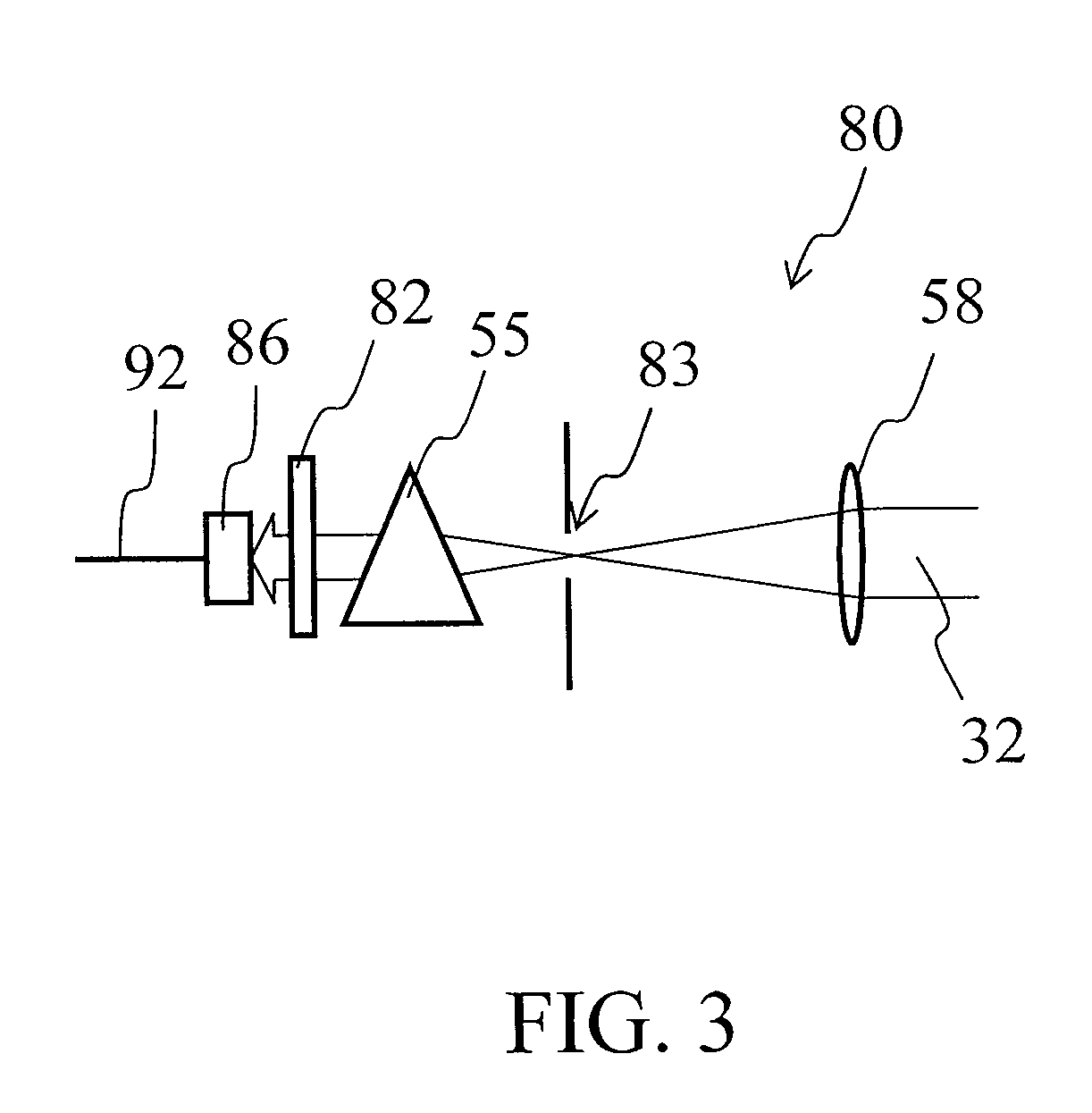Glass composition that emits fluorescence in infrared wavelength region
a technology of infrared wavelength and composition, applied in the field of glass composition, can solve the problems of narrow available wavelength range, limit the wavelength range of light, and limit the extension of wavelength range to about 100 nm
- Summary
- Abstract
- Description
- Claims
- Application Information
AI Technical Summary
Benefits of technology
Problems solved by technology
Method used
Image
Examples
example 1 to 23
[0084]Commercially available silica, alumina, lithium carbonate, sodium carbonate, potassium carbonate, magnesium oxide, calcium carbonate, strontium carbonate, barium carbonate, titania, zirconia, boron oxide, bismuth trioxide (Bi2O3), etc were weighed so that the respective compositions indicated in Tables 1A and 2A were obtained. Thus raw material batches were prepared.
[0085]For the purposes of preventing bismuth trioxide from being reduced unnecessarily and refining glass, magnesium sulfate (MgSO4) that was a commercially available reagent was used as a part of the MgO raw material. In the composition containing Na2O, sodium sulfate (Na2SO4) was used as a part of the Na2O raw material. The content of such sulfates was determined so that the mole ratio thereof to bismuth trioxide was at least 1 / 20.
[0086]Each batch thus prepared was put into a platinum crucible and was kept in an electric furnace at 1600° C. for 18 hours. Thereafter, the molten batch was poured on an iron plate to...
example 24
[0096]Example 24 shows an example of the glass-ceramics. The glass sample of Example 11 was kept in an electric furnace at 780° C. for one hour. Then, the temperature in the furnace was raised at a rate of 5° C. / min. to 850° C. and kept for one hour, and the power of the furnace was turned off and the glass then was cooled slowly to room temperature to obtain the glass sample of Example 24.
[0097]Even after the heat treatment, the glass sample was not deformed and the color tone of the glass sample hardly changed. On the other hand, the thermal expansion coefficient line for measuring a glass transition point and a deformation point had no inflection points and no maximum values in room temperature to 1000° C. This means that the glass-ceramics sample was obtained through the heat treatment and that the heat resistance of the glass-ceramics is sufficient.
[0098]The characteristics of the glass-ceramics sample were measured by the above-described methods and Table 2B shows the results....
PUM
| Property | Measurement | Unit |
|---|---|---|
| wavelength range | aaaaa | aaaaa |
| wavelength range | aaaaa | aaaaa |
| wavelength range | aaaaa | aaaaa |
Abstract
Description
Claims
Application Information
 Login to View More
Login to View More - R&D
- Intellectual Property
- Life Sciences
- Materials
- Tech Scout
- Unparalleled Data Quality
- Higher Quality Content
- 60% Fewer Hallucinations
Browse by: Latest US Patents, China's latest patents, Technical Efficacy Thesaurus, Application Domain, Technology Topic, Popular Technical Reports.
© 2025 PatSnap. All rights reserved.Legal|Privacy policy|Modern Slavery Act Transparency Statement|Sitemap|About US| Contact US: help@patsnap.com



